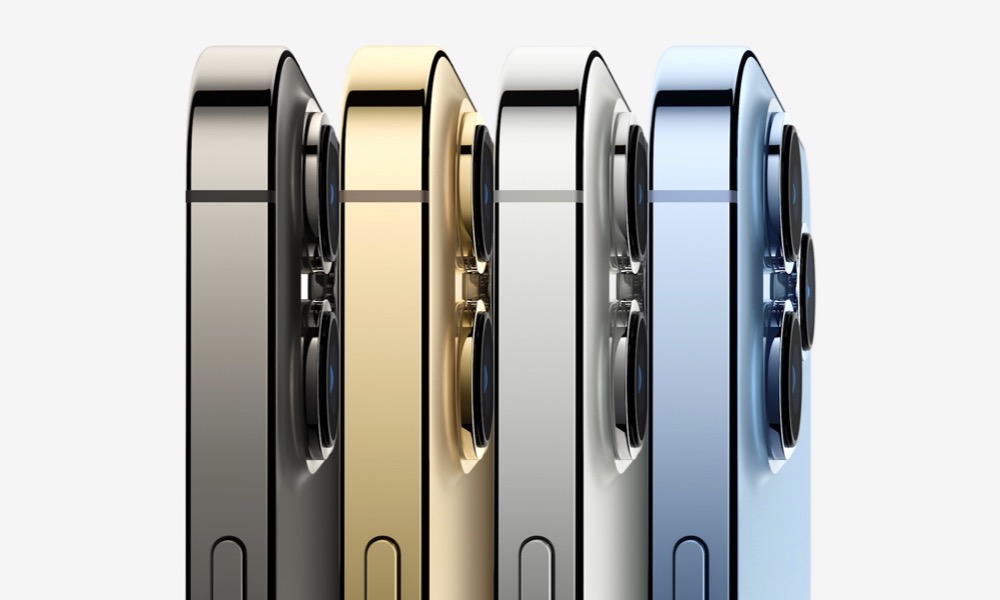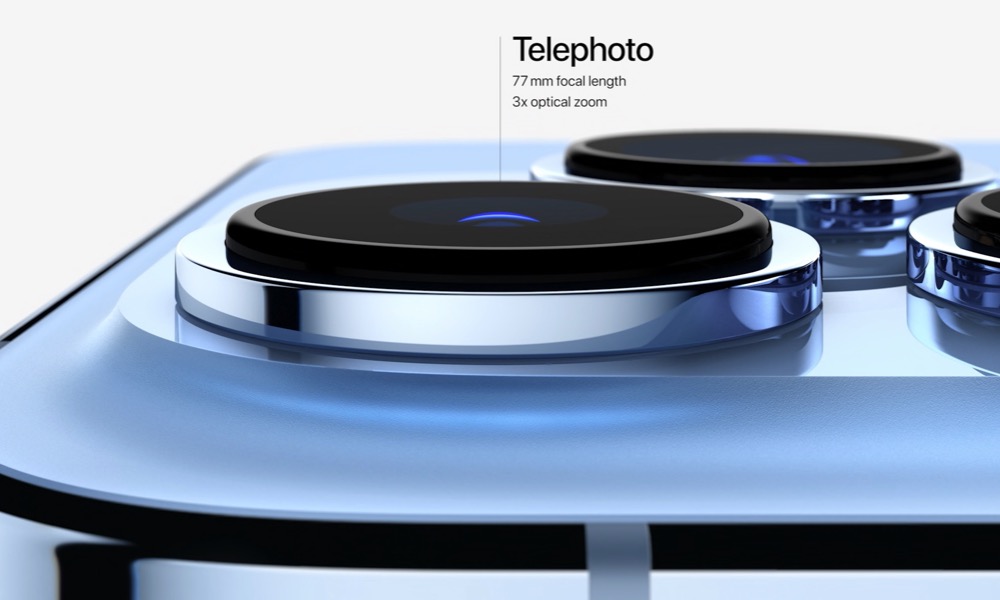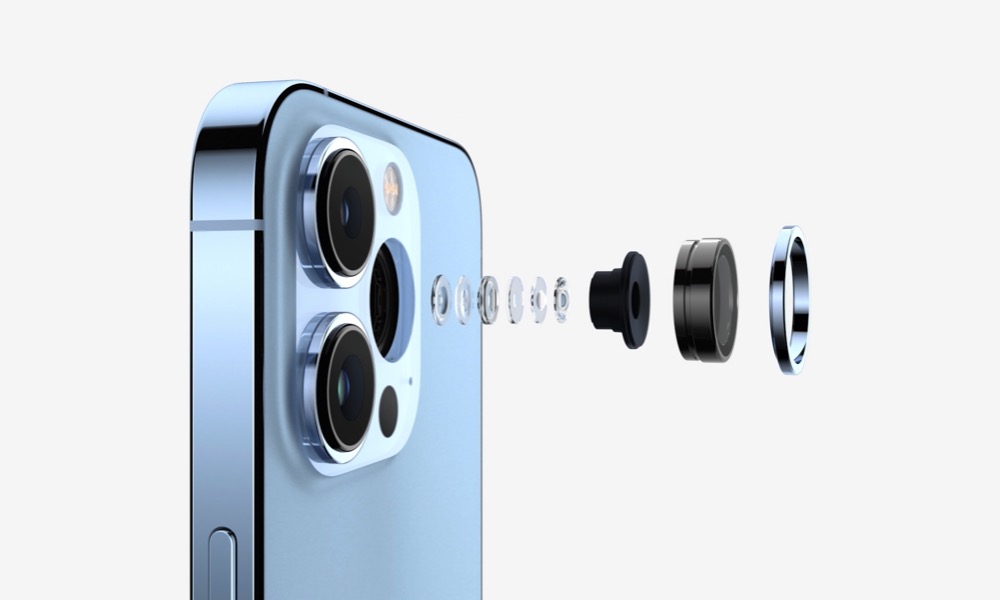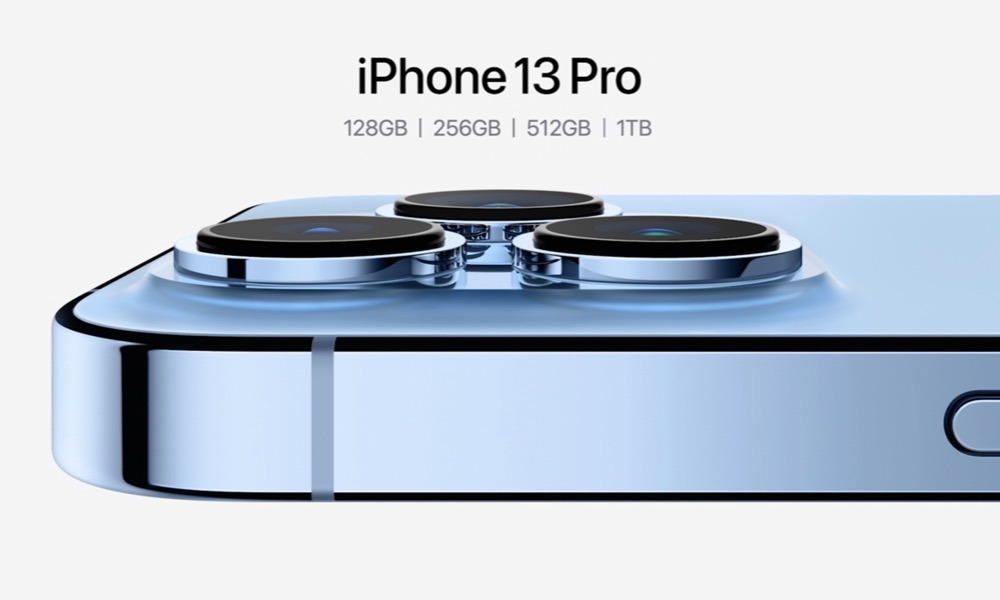New iPhone 13 Pro Series Lands with 120Hz ProMotion Displays, ProRes Video, Bigger Batteries, and More
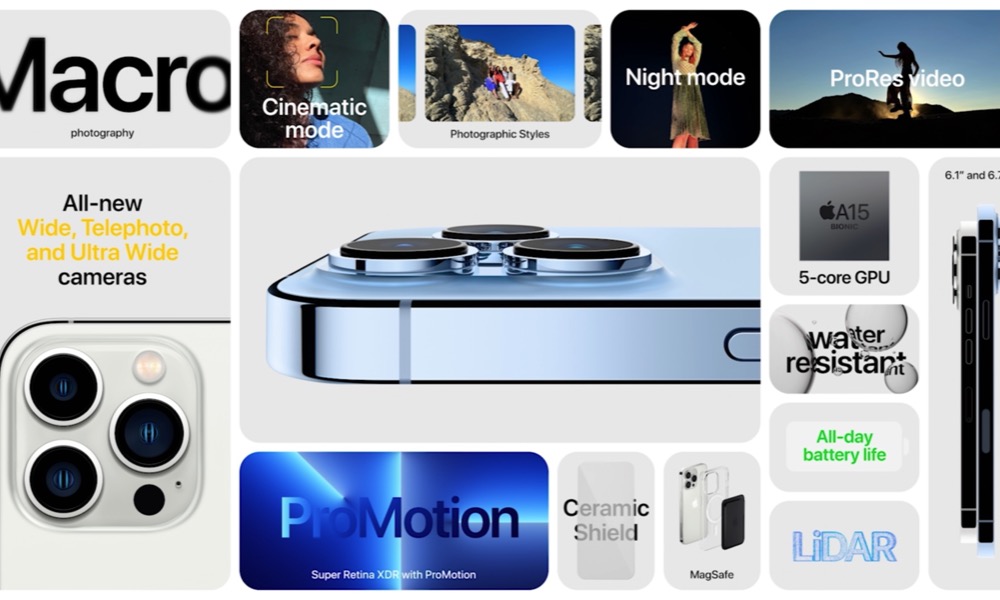 Credit: Apple
Credit: Apple
Toggle Dark Mode
Following the debut of the iPhone 13 and iPhone 13 mini at today’s California streaming event, Apple’s Senior VP of Worldwide Marketing took the stage to unveil Apple’s incredibly higher-end “Pro” models.
As usual, the iPhone 13 Pro takes all the great things about the standard iPhone 13, and dials them up a notch, with even better cameras, and a return to an even better display.
Greg “Joz” Joswiak introduced the 6.1-inch iPhone 13 Pro and 6.7-inch iPhone 13 Pro Max, showing off at least one thing that Apple managed to keep under wraps: a colour that we weren’t expecting.
New Colours, Smaller Notch
When Apple released the iPhone 11 Pro two years ago, it debuted an additional colour option — a first for Apple’s Pro lineup, which had previously only come in variations of black, white, and gold. The iPhone 11 Pro was offered in Midnight Green, but the switch to a Pacific Blue colour for the iPhone 12 last year made it apparent that it was going to go with a new colour each year.
Every rumour we heard pointed to this year’s new colour being some variation of orange or bronze. Some called it “Sunset Gold” while others said it learned more toward orange.
Either way, that’s not what Apple did, with Joz showing off instead that the iPhone 13 Pro models will be coming in “Sierra Blue” instead.
This will be accompanied by the other usual colours of Graphite, Gold, and Silver, and contrary to other reports, there’s also no indication that the new Graphite is any darker than before.
Naturally, just like the standard iPhone 13 models, the iPhone 13 Pro and iPhone 13 Pro Max will also be getting the same front notch reduction, which works out to 20% smaller than their respective iPhone 12 predecessors.
ProMotion Display
The iPhone 13 Pro once again leaps out ahead in display technology, with Apple delivering the long-rumoured 120Hz ProMotion Super Retina XDR Display.
There’s every reason to believe that Apple wanted to make this leap last year, until pandemic related supply chain problems made it impossible. As a result, the fact that the iPhone 12 and iPhone 12 Pro shipped with the same OLED display technology was largely an aberration.
This year, however, we get the promised new display, which can run refresh rates from 10Hz to as high as 120Hz. It also gains 1,000 nits of peak outdoor brightness. That’s a jump of 200 nits over last year, and a similar notch above the non-Pro models, which have moved from 625 nits to 800 nits this year.
The new ProMotion displays can adjust the refresh rate so quickly that it even changes as users scroll through an email or web page. You get fast frame rates when you need them, and slower ones to preserve battery life when you don’t.
Unfortunately, even though the ProMotion displays are likely based on LTPO technology, Apple made no mention of the much-rumoured always-on display capabilities, so it looks like that will remain the exclusive domain of the Apple Watch for now.
A15 Bionic with 5-core GPU
Engineering VP Hope Giles already spoke about the incredible improvements in its new A15 Bionic during the iPhone 13 announcement, however the chip in the iPhone 13 Pro gets a slight bonus over its non-Pro cousins this time around.
While the iPhone 13 and iPhone 13 mini will only include a 4-core GPU in their A15 chips, the iPhone 13 Pro and iPhone 13 Pro Max get a 5-core version (as does the new iPad mini 6).
This will allow the Pro models to offer slightly better graphics performance for demanding games and other GPU-intensive applications, but we’ll have to wait and see how much difference that will make in practical terms.
As we saw last fall with Apple’s M1 MacBook Air lineup, where the entry-level models only offered a 7-core GPU, this most likely isn’t a deliberate choice on Apple’s part. Instead, it’s a result of “chip binning.” Basically, Apple designs all of its A15 chips with five GPU cores, but those that can’t handle running all five cores at once have the faulty core disabled and are used as four-core chips instead.
Apple also did something similar with the A12X chip in the 2018 iPad Pro, which featured a 7-core GPU. When the 2020 iPad Pro came out 18 months later, Apple and TSMC had clearly solved the production problems, and were able to produce an 8-core GPU version that it then dubbed the A12Z.
Apart from the extra GPU core, however, the A15 Bionic in the iPhone 13 Pro offers the same six CPU cores, and 16-core Neural Engine as the iPhone 13, and since most apps don’t use the GPU at all, there won’t be any real difference in performance for normal everyday use.
Camera Improvements
With the iPhone 13 gaining some of the iPhone 12 Pro’s camera improvements, such as the new 1.7-micron sensor, the iPhone 13 Pro naturally takes another leap forward this year.
Louis Dudley, iPhone Product Manager, took the virtual stage to show off some of the new features that the iPhone 13 Pro will be packing in, and as usual, it’s nothing short of a revolutionary combination of hardware and software.
From a hardware perspective, the iPhone 13 Pro telephoto lens now moves to a 77mm equivalent focal length, which means a 3X zoom factor, and unlike last year, this is found on both the iPhone 13 Pro and the iPhone 13 Pro Max.
The Ultra Wide lens on both iPhone 13 Pro models also gets a nice boost, with autofocus and a six-element lens, plus an f/1.8 aperture that means it gets 92% better low-light performance.
Meanwhile, the main Wide lens gets a larger 1.9-micron sensor, which combined with an f/1.5 aperture means a 2.2X improvement in low-light performance.
In addition, the autofocus on the Ultra Wide lens enables macro photography for the first time ever, with the ability to focus sharply on objects a mere 2cm away from the lens.
All three cameras also gain Night Mode support, including the 3X telephoto lens.
Photographic Styles
The A15 chip will also power another new computational photography feature this year that Apple is calling Photographic Styles. Apple’s Image Quality Engineer, Rebecca Pujols, explained that this goes beyond filters to use actual computational photography right into the image processing pipeline to make localized adjustments to the photo — all in real-time at the moment of capture.
For example, Photographic Styles can apply the right adjustments to specific areas of the photo, adjusting things like colour tone, vibrance, and lighting while preserving natural skin tones. It’s basically Apple’s Portrait Lightning mode taken to the next level, and beyond.
Users will be able to choose from four default styles before they shoot, but these can also be adjusted for warmth and tone to offer a more individual look. Your preferred styles can also be saved so that you won’t have to select them each time, and as with Apple’s other computational photography features, you can even adjust them after the fact.
While Apple showed this one off during its iPhone 13 Pro presentation, Pujols noted that it’s also coming to the iPhone 13 and iPhone 13 mini.
ProRes Video
As we heard previously, Apple also plans to add support for natively recording ProRes video, although that’s not coming until an iOS 15.x software update arrives later this year.
Like ProRAW last year, this will be exclusive to the iPhone 13 Pro series, and will provide exceptionally high colour fidelity in a file format that’s ready to be sent into a professional video editing app like Apple’s own Final Cut Pro. Users will be able to edit ProRes videos in the Photos app as well.
While most users won’t likely care too much about this — especially since the file sizes it creates will be huge — it’s going to be a considerable boon for video editors who want to shoot video in a format that’s ready for final delivery into an editing workflow.
Notably, however, it looks like ProRes won’t work with Dolby Vision HDR — that’s going to be an either-or choice. Apple also plans to limit ProRes recording to 4K/30fps, and even that’s only available if you have a 256GB iPhone 13 Pro. If you opt for the 128GB model, you’re going to be stuck recording in 1080p HD at 30fps, but that’s probably fair considering that a single minute of 4K/30fps ProRes 422 video will take up 5GB of storage.
Battery Life
The iPhone 13 Pro and iPhone 13 Pro Max gain the same kind of battery life improvements as their non-Pro cousins, with the 6.1-inch model offering 1.5 hours more runtime than the iPhone 12 Pro, and the iPhone 13 Pro Max gaining 2.5 hours over last year’s model.
This is even more surprising when you consider that the ProMotion display could potentially draw significantly more power, which also means that your mileage will vary widely depending on what you’re doing on your screen. While iOS 15 will keep the refresh rate down as much as possible, spending extensive time in apps like games will probably make for an even more serious drain than before.
Pricing, Storage, and Availability
This year’s iPhone 13 Pro and iPhone 13 Pro Max start at the same prices as their predecessors, although, unlike the non-Pro models, the base storage capacities remain the same, at 128GB, 256GB, and 512GB.
To avoid raising prices, Apple has kept the 128GB model in the lineup, and, for the first time, added a fourth storage tier on the top end. There is indeed a 1TB iPhone this year, but it’s not going to come cheap.
In fact, while the 256GB iPhone 13 Pro is only $100 more than the 128GB model, just like last year the 512GB still jumps by another $200. Now, however, the 1TB model adds another $200 on top of that.
This means that you’re basically paying 50% more for a 1TB iPhone over the entry-level 128GB model — $1,499 vs $999, and of course for the iPhone 13 Pro Max, that jumps to $1,599 vs $1,099.
This makes it a steep investment for the average consumer, although of course if you’re somebody who actually needs that higher capacity to handle ProRes video footage, then it may be a much easier pill to swallow. After all, it’s certainly cheaper than most professional video cameras, and it’s capable of so much more.
The entire iPhone 13 lineup will be available for pre-order this Friday, and will arrive in stores next Friday, September 24. Apple is also leaving the standard iPhone 11 and iPhone 12 models in the lineup, which shift down to the $499 and $599 price points previously occupied by the iPhone XR and iPhone 11. The iPhone SE also remains available, of course, for the same $399 price as always.

